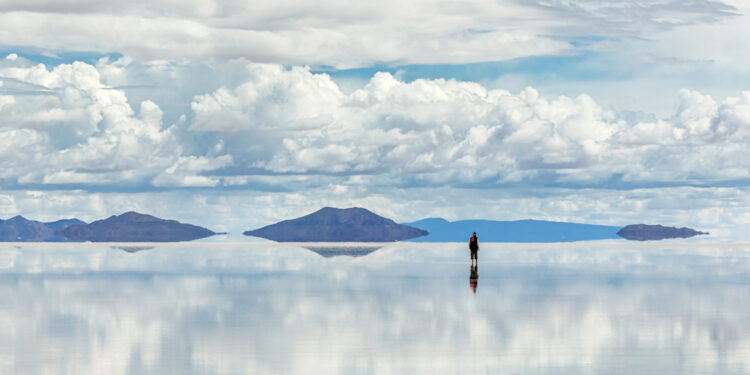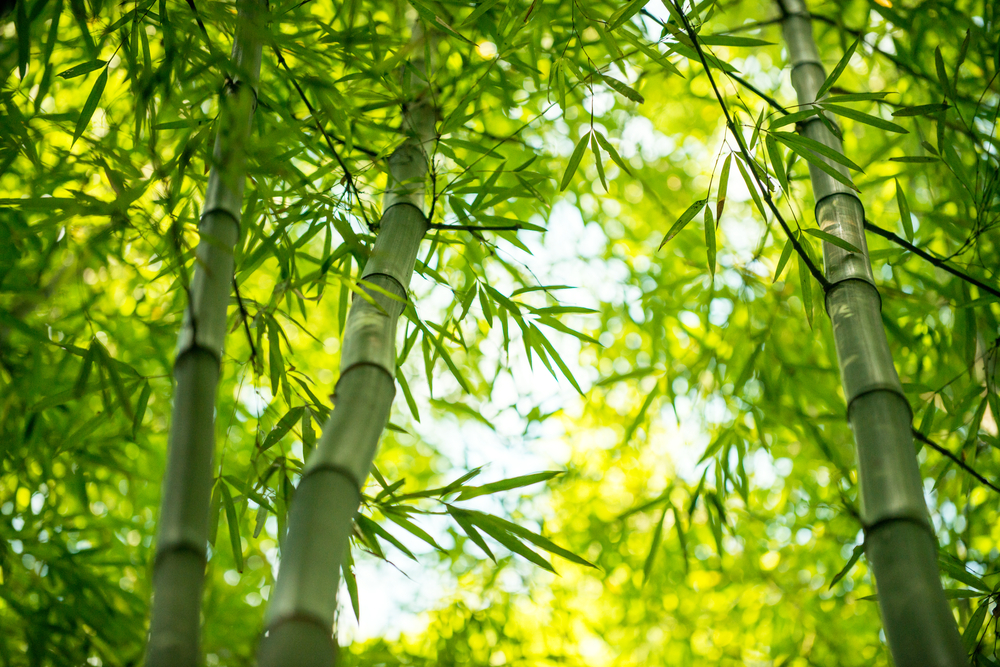Nestled high in the Andean Plateau in Bolivia, the Salar de Uyuni is a breathtaking natural wonder that attracts visitors from all over the globe. As the world’s largest salt flat, this surreal landscape stretches over an astonishing 10,000 square kilometers, offering a truly unique and unforgettable experience. During the rainy season, the area transforms into a giant mirror, reflecting the sky in a dazzling display of nature’s splendor.
A Journey to the Andean Plateau
The Salar de Uyuni is located in the Potosí and Oruro departments of southwestern Bolivia, near the crest of the Andes. At an altitude of approximately 3,650 meters above sea level, the region’s climate is cool and dry, perfect for preserving the salt flat’s delicate crystalline structure. The area is home to several unique and endangered species, including the Andean flamingo, vicuñas, and the viscacha – a rabbit-like rodent found only in the high Andes.
The Origins of the Salar de Uyuni
The story of the Salar de Uyuni begins millions of years ago when the region was covered by a vast prehistoric lake called Lago Minchin. As the lake gradually evaporated, it left behind a thick layer of salt and other minerals, creating the immense salt flat we see today. Over time, the area has been shaped by geological forces, including volcanic activity, tectonic shifts, and the relentless process of erosion.
A Vast and Surreal Landscape
The seemingly endless expanse of the Salar de Uyuni creates an otherworldly experience for visitors. The vast white plain, which resembles a frozen sea, is made up of countless salt polygons, a result of the natural process of evaporation and contraction. The salt crust is typically several meters thick, making it strong enough to support the weight of vehicles.
In addition to the striking salt formations, the Salar de Uyuni also boasts several unique geological features. One such marvel is the Isla Incahuasi, a rocky island rising from the salt flat and covered in towering cacti. The island, which is home to a small population of viscachas, offers a stunning panoramic view of the salt flat and the surrounding mountains.
The Magical Mirror Effect
During the rainy season, which typically occurs between December and April, the Salar de Uyuni undergoes a mesmerizing transformation. As a thin layer of water accumulates on the salt flat, it creates a vast, mirror-like surface that reflects the sky, clouds, and surrounding landscape. This optical illusion results in a dreamlike experience, as the horizon appears to disappear and the sky and earth merge into one.
The mirror effect has become a popular attraction for photographers and tourists alike, as it provides a unique opportunity to capture stunning images that play with the notions of perspective and reality. It is important, however, for visitors to respect the fragile environment and adhere to local regulations to ensure the preservation of this natural wonder.
Exploring the Salar de Uyuni and its Surroundings
A visit to the Salar de Uyuni is typically undertaken as part of a guided tour, which can range from one to several days in length. These tours often include stops at other nearby attractions, such as the Train Cemetery – a haunting graveyard of abandoned locomotives – and the Red and Green Lagoons, which are home to rare and exotic bird species like the James’s flamingo.
Many tours also venture into the Eduardo Avaroa Andean Fauna National Reserve, a protected area that boasts a diverse array of wildlife and stunning landscapes, such as the Sol de Mañana geothermal field, with its bubbling mud pots and steaming fumaroles, and the breathtaking Laguna Colorada. This striking red lake, colored by algae and mineral deposits, is a breeding ground for three species of flamingos, making it a must-see destination for nature enthusiasts.
Accommodations during these tours can vary from basic to luxurious, depending on your preferences and budget. Many visitors choose to stay in one of the unique salt hotels in the region, which are constructed almost entirely from salt blocks. These eco-friendly lodgings offer a comfortable and immersive experience, allowing guests to truly connect with the extraordinary environment.
When planning a trip to the Salar de Uyuni, it is essential to consider the time of year and the type of experience you are seeking. While the rainy season provides the opportunity to witness the spectacular mirror effect, the dry season offers better access to the salt flat and surrounding attractions, as well as more predictable weather conditions. Regardless of the season, the Salar de Uyuni is sure to leave a lasting impression on all who visit.
A Testament to Nature’s Wonders
The Salar de Uyuni stands as a testament to the awe-inspiring beauty and power of nature. As the world’s largest salt flat, it offers an unparalleled experience that challenges the boundaries of our imagination. Whether exploring the vast expanse of salt polygons, marveling at the surreal mirror effect, or venturing into the surrounding landscapes teeming with unique wildlife, a visit to the Salar de Uyuni is a journey into the heart of one of our planet’s most extraordinary wonders.
In a world where natural beauty is increasingly threatened by human activity, the Salar de Uyuni serves as a powerful reminder of the importance of preserving and cherishing these unique and fragile ecosystems. By raising awareness and promoting sustainable tourism practices, we can help ensure that future generations can experience the magic of the Salar de Uyuni and other natural wonders for years to come.







